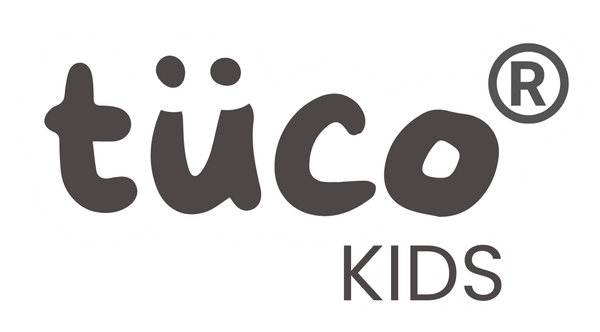
Building Blocks for Kids: More Than Just Toys, It’s a Tool for Early STEM Learning
At first glance, building blocks may seem like simple toys. Colorful cubes and shapes that kids stack, topple, and rebuild again and again. But beneath that innocent play lies one of the most powerful learning tools for early childhood development. Whether it is wooden blocks, magnetic tiles, or classic interlocking bricks, building sets are more than just entertainment. They become a hands-on classroom where children develop problem-solving abilities, creativity, and strong foundational STEM skills.
For parents looking to make playtime both educational and enjoyable, building blocks are one of the best investments you can make in your child’s growth.
The Hidden Science Behind Building Blocks
While children think they’re just playing, building blocks introduce them to complex cognitive and physical skills in a fun, intuitive way. Every time a child connects, stacks, or balances pieces, their brain is solving problems, testing hypotheses, and learning how the world works.
Here’s what’s really happening during block play:
-
Spatial Awareness: Understanding how shapes fit together helps children visualize space and relationships — a skill that underlies geometry, architecture, and even art.
-
Problem-Solving: Deciding how to make a tower stable or how to connect different shapes encourages experimentation and critical thinking.
-
Fine Motor Skills: Picking up small pieces, aligning them, and stacking them develops precision and hand-eye coordination.
-
Math and Counting: Children naturally learn about size, balance, patterns, and even basic arithmetic while building.
-
Engineering Thinking: Constructing bridges or buildings introduces cause and effect — why a structure stands or falls — which mirrors the fundamentals of engineering.
-
Patience and Perseverance: When a structure collapses, children learn resilience and the importance of trying again — a life lesson disguised as play.
STEM Skills: The Foundation for Future Learning
STEM — science, technology, engineering, and mathematics — might sound too advanced for preschoolers, but building blocks introduce these concepts in their simplest, most engaging form. Here’s how:
-
Science: Children experiment with gravity, balance, and weight every time they stack or topple a tower.
-
Technology: Building teaches them how different “systems” (shapes and structures) interact — the same principle behind coding or robotics.
-
Engineering: Every block tower is a mini-engineering project, requiring planning, testing, and refining.
- Mathematics: Shapes, symmetry, measurement, and spatial reasoning all develop naturally through block play.
This early exposure builds the foundation for more complex STEM thinking later in school. Children who regularly engage in constructive play are often better at logical reasoning, spatial problem-solving, and even language development.
Creativity and Imagination in Action
Beyond the science, building blocks are also a blank canvas for creativity. A handful of blocks can become a spaceship, a zoo, a castle, or a dream city. This open-ended nature encourages storytelling, planning, and expressive thinking. When kids build together, they also develop collaboration, communication, and leadership skills — essential for success in school and life.
Building Confidence and Emotional Growth
One of the lesser-known benefits of building blocks is the emotional development they support. Completing a structure — even a simple tower — gives children a sense of achievement. When it collapses and they rebuild, they learn perseverance and resilience. These lessons build self-esteem and confidence, showing children that mistakes are just part of the learning process.
Healthy Habits Extend Beyond the Mind
While activities like building blocks support cognitive development during early growth, it is equally important for parents to care for the physical well-being of young children. Establishing healthy daily habits such as gentle skincare routines, proper hygiene, and regular hair care plays a key role in building confidence and self-esteem.
Simple habits like washing hands after play, cleansing the face to remove dirt and sweat, applying a light moisturizer to keep skin soft and hydrated, or brushing and detangling hair before school help children stay fresh and comfortable throughout the day. Choosing kid-safe, pH balanced skincare and hair care products that are formulated for sensitive skin protects the natural skin barrier, prevents dryness and irritation, and nurtures long-term skin and hair health.
Just like block play builds problem-solving and creativity, these daily self-care routines strengthen independence, discipline, and a positive self-image. With Tuco’s gentle and dermatologically tested product ranges designed for children, parents can create a supportive routine that helps kids look good, feel good, and approach learning with confidence from head to toe.
Tips for Parents: Make the Most of Block Play
To truly unlock the learning potential of building blocks, parents can go beyond free play with a few intentional strategies:
-
Add challenges: Ask your child to build the tallest tower or a bridge that holds a toy car.
-
Introduce storytelling: Encourage them to explain what they’re building and why.
-
Incorporate learning: Use block play to introduce counting, shapes, or colors.
-
Play together: Collaborative builds encourage communication, teamwork, and deeper learning.
- Rotate block types: Try wooden blocks, magnetic tiles, or themed sets to keep play fresh and engaging.
Building blocks might look simple, but they’re one of the most powerful tools for childhood development. From STEM learning and creativity to emotional resilience and confidence, block play builds skills that go far beyond the playroom.

